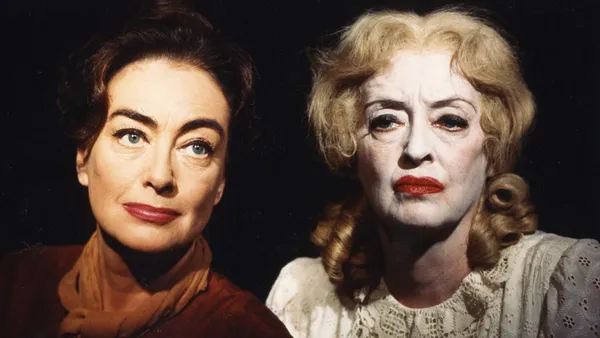 |
| What Ever Happened To Baby Jane? |
Halloween is always an occasion for celebrating the bizarre, the grotesque and the discomforting, but Halloween 2022 was special for another reason: as the 60th anniversary of much loved classic What Ever Happened To Baby Jane? Its onscreen rendering of the famous feud between stars Bette Davis and Joan Crawford helped to give it iconic status, and it was one of the inspirations behind author Caroline Young’s recently published book Crazy Old Ladies: The Story Of Hag Horror. Caroline took the time to share her thoughts on the phenomenon that saw some of the great stars of Hollywood’s Golden Age embark on second careers in genre film.
“I was interested in this idea of actresses as they get older and they lose the kind of the appeal tied in with youth and beauty. Those are so entwined, and I think there's this kind of stress of as they get older, they lose the roles. There was a couple of films that came out a few years back: Judy, and also Film Stars Don't Die In Liverpool. I was interested in these ideas of what happens when they get older and they’re relegated to different roles. And at that time, in the Sixties and Seventies, there was this whole new genre of horror movies, and it was quite fascinating. When you look at the list of all the films, and all the recognisable names who have these roles in these slightly creaky, camp horror movies, it was really fascinating. It was What Ever Happened To Baby Jane that really triggered this new wave of horror.”
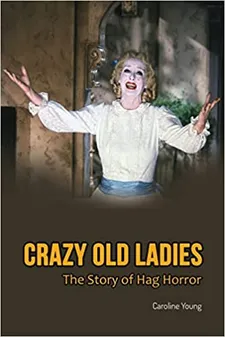 |
| Crazy Old Ladies: The Story Of Hag Horror |
When I first watched that film as a child, I tell her, its stars looked elderly to me, but in actual face Bette Davis was only 54 at the time, which doesn’t seem all that old today. At that time, even women with big star power were being written off by mainstream cinema when they were in their thirties.
“Yeah, definitely,” she says. “It’s probably one of the reasons why Garbo left, and Norma Shearer – she wanted to leave on a high. Marilyn Monroe was worrying about getting old when she was 36. She had all those kind of concerns and it didn't help that the studio was very critical as well.”
Is that changing at all now?
“I think as you said, we don't really think of the forties or fifties as old or elderly, so yeah, I think our concepts of age has definitely changed. And yeah, there's more varied roles for women. I think in the Fifties and Sixties it was really different. There were these different categories of women, you know? There was the good wife, the young débutantes who's going to get married, or the spinster. There's often, when you watch films, nothing more tragic than being an unmarried woman. That was a big concern.”
It makes me think the virgin, mother and crone or virgin, mother and whore concept, I suggest.
“Another category would be the floozy,” she nods. “It's interesting, in a lot of film noir, there’s the floozy, you know, the girl who hangs out at the bar and everything, and she's miserable. Gloria Grahame did a lot of those kinds of parts. It’s if you don't follow the norms. And I think that's what Baby Jane was about: two women who didn't follow the norms, and they ended up miserable and living together and in this horror situation.”
The strange thing for many members of the public, who didn’t know what has happening inside the industry, was that their favourite stars just disappeared – and often when they were still interested in watching them. For me, it brings to mind Ed Wood’s realisation that the elderly Bela Lugosi still had star power but no longer commanded a star’s wage, so he could be cast in Plan 9 From Outer Space.
“Yeah, there's that,” she agrees. “Curtis Harrington did quite a few of the films that I featured in my book. He loved old Hollywood and he wanted to find those stars, he wanted to bring them back, and he cast them in his films. There was Gale Sondergaard, and various other actresses – Ruth Roman, who was in Strangers On A Train. He really wanted to cast Marlene Dietrich in his film Games, but interestingly enough, the studio said ‘No-one's interested in seeing Dietrich anymore’ – and this was 1967. He had such a love of film, so that's why he was doing it. He wasn't making fun of them – he wanted to honour them. And Peter Bogdanavich as well – he cast Boris Karloff in his film Targets. So it's not only the women who were being brought back, it was forgotten silent film stars as well.”
A lot of silent film stars lost their opportunities because they weren’t perceived as having the right voices, didn't they? I know that was awful for Clara Bow.
She nods, and references a similar situation faced by John Gilbert, who had issues with alcohol but was also told that his voice wasn’t good enough for talkies.
So does she think it was about the names, or about people's own admiration of those stars, or about being able to get a higher quality of acting than was usually available for those films?
“It was probably a bit of both. Probably the prestige of the name. There’s an older audience which recognises the name and is interested in seeing what happened to them. And maybe there's also this idea of knocking people down a little bit and wanting to watch the older woman being terrified or demented, or being crazy on screen, that kind of enjoyment. And seeing a once glamorous star being slightly degraded, there was probably an element of that.”
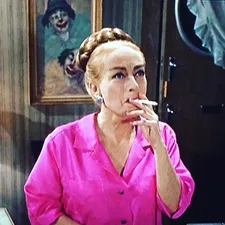 |
| Joan Crawford in Berserk |
I mention that I quite often find myself talking to actors who have appeared in genre films for the first time and tell me that they really enjoy it, often finding it liberating.
That’s a reaction she’s familiar with. “It wasn't this thing where it was awful that they were made to do it,” she stresses. “You know, Joan Crawford, she wanted to be a star, so when she went over to Britain to make Berserk, she was given the star treatment. I mean, she had maybe a slightly smaller trailer, maybe not the quite the Hollywood stuff that she was used to, but she got a beautiful place to stay in London, and the crew respected her, and she got interviews by the Times, and all those kind of things. So she got treated like the star she wanted to be, and she wanted to keep on working. And, you know, I think it was probably good fun as well, doing those different roles. It must have been challenging as well.”
We have these conversations about women disappearing when they hit their thirties, but there are also those who are glad of the chance to play the more interesting roles that aren't available to women who are being presented as glamour objects.
“I suppose younger actresses want to do it as well,” she remarks. “It's a way of challenging themselves with the more difficult roles where you get to transform yourself. I think the idea of the character actor in the challenging parts is that maybe if an older woman isn't conceived as a viable love interest anymore then that is just what has to happen. You have to take on those character parts. But I think what's good now is we're seeing more older women doing that who are able to be the romantic heroine as well. Jennifer Lopez is still doing that.”
Why does she think What Ever Happened To Baby Jane is still so well known and so well loved after all these years?
“I think it's probably down to Bette Davis' look,” she says. “It was so unusual, so grotesque, that I think it became caught in people's minds. And also I wonder if people remember it because of French and Saunders, when they did their film parodies in the early Nineties. It's gone beyond its origins, that image of her.”
So does she have particular favourites from that era?
“Joan Crawford in Straitjacket. She's strutting along with all her bangles and that hair, and then she's holding the axe and everything. And I really like Shelley Winters in What's The Matter With Helen? That was quite underrated and she did the whole killing the rabbit thing way before Fatal Attraction as well. So yeah, and what else? I mentioned Rosemary's Baby and I think Ruth Gordon in Rosemary's Baby is one of those ones because she just appears to be this kind of harmless grandmother, but you know, she's really this very sinister character at the centre of her eccentric performance. I think that’s definitely one of my favourites.”
She had a strong sense of what she wanted to include in the book from the outset, she explains, although there were a lot of obscure ones, like Dear Dead Delilah with Agnes Moorhead, which merited a mention but which she couldn’t go into in detail.
“There were also ones that weren't technically horror that I wanted to mention, such as Valley Of The Dolls, which I thought it really leaned into that Baby Jane phenomenon. In a lot of the publicity around it, they mentioned it as being a kind of Baby Jane follow up because it was about older actresses struggling to stay relevant, and it was about this fear of ageing. And there's a few horror characters in it, who torment their rivals. I thought it was an interesting addition, just to add a bit of context to the genre.”
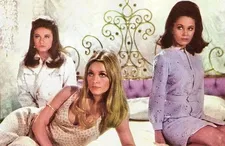 |
| Valley Of The Dolls |
When we talk about horror and fear of ageing, does she think that the latter is something which frightens people in itself, and part of what people don't want to confront when they push stars out of the mainstream?
“I think it's a kind of a horror thing, isn't it?” she says. “When you get older, it does become a little bit like that. I suppose it does play on people's minds. I think particularly for an actress, it's a terrifying concept. And also in these films, there is that bit where they look in the mirror and can’t stand to see their image. And they look at their scrapbooks or photographs – like Norma Desmond in Sunset Boulevard, she has photos of herself when she's younger. And so it's that kind of mourning the loss of of youth. I think also in horror films, women's bodies and fertility and pregnancy and all those kinds of things become a form of horror as well, so I think that's all tied in into it.”
I note that I have always felt it rather unfair that women get criticised for valuing their youth and beauty at the same time as being told that those are the only valuable assets they have.
“It’s the power of beauty and youth for women and so if you've had that power, and then you lose it, that’s probably a quite terrifying prospect,” she concurs. “Men have some fears but definitely not in the same way, because it's also connected with women's fertility. When women aren't fertile anymore, it's like they're expected to just disappear or become invisible. And I mention in the book how it's kind of a warning to younger women that, you know, this is what happens to you if you don't get married. If you don't do what you're supposed to do, you'll end up like Baby Jane.”
The book kept evolving as a consequence of the research and writing process, she says.
“I explored a lot more of the kind of tropes around how women have been depicted from more of a feminist angle than I initially thought, and yeah, I included films I hadn't really thought of, and I kept talking about the concept of witches and things like that. I looked at Rosemary's Baby and also The Exorcist, which I thought was interesting to include as well, because the voice of the Devil in The Exorcist, or the demon, was Mercedes McCambridge, who was a classic Hollywood actress. So I thought that was quite interesting.”
Lately occult horror has been enjoying something of a resurgence, and over the past few months there have been lots of films about witches. Does she think that’s related to anxieties around women’s roles?
“Yeah,” she muses. “Yeah, I mean, I wonder also, I just thought the other day about these discussions around women's bodies and abortion and everything in America, I wonder if that message will come through to horror movies in a bit. I mean, a lot more women are getting more of a chance to make their own films, so I wonder if that's kind of maybe adding more feminism to horror movies.”
We talk about her current to-watch list. She’s looking forward to Alice Lowe’s Prevenge.
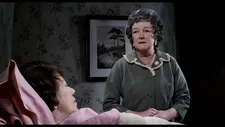 |
| The Beast In The Cellar |
“I think often, the fears of the times are reflected the horror movies,” she continues. “What's going on in society will be reflected in Hollywood. The idea of the which I think could be tied into the way women are saying that they will not tolerate certain things anymore, but at the same time, more power is being taken away. It’s an interesting sort of contradiction.”
She’s positive about the future. “I think there will be more opportunities for older women. Such as, Reese Witherspoon, she has her own production company, she has a book club where she chooses projects that have more varied roles for women. So I think, like in that example, there'll be other opportunities where women are choosing their own material, things that appeal to them, that are meaningful, so it will open up and reach a variety of roles.”
She’s had some great feedback on the book, she says, but inevitably there are films which she now wishes she’s thought to include. “Actually, when I submitted the first draft, I then realised that I had left out some films that I should have included, like The Beast In The Cellar, because I included The Killing Of Sister George.”
Beryl Reid is a must for this kind of work, I agree. But I go back to something she said earlier on in our conversation – that she felt it important to approach the topic with sensitivity.
“I didn't want to continue that sort of slightly sexist, ageist thing,” she explains. “I wanted to look at it in a sensitive way and so the title was kind of a bit tongue in cheek. I was thinking about when Jack Warner dismissed. Betty Davis and Joan Crawford, when Robert Aldrich came to him to suggest the script for Baby Jane and Jack \Warner said ‘I wouldn’t give a dime for those two washed up old bitches.’”
She thought that kind of language was too strong for the title, she says, and she didn't want to imply that the films are necessarily sexist, as they did give a lot of opportunities to women.
“When you watch them now, they're a little bit eye opening.” She laughs. ”But that's kind of fun in some ways.”
Crazy Old Ladies: The Story Of Hag Horror is in bookshops now.





















